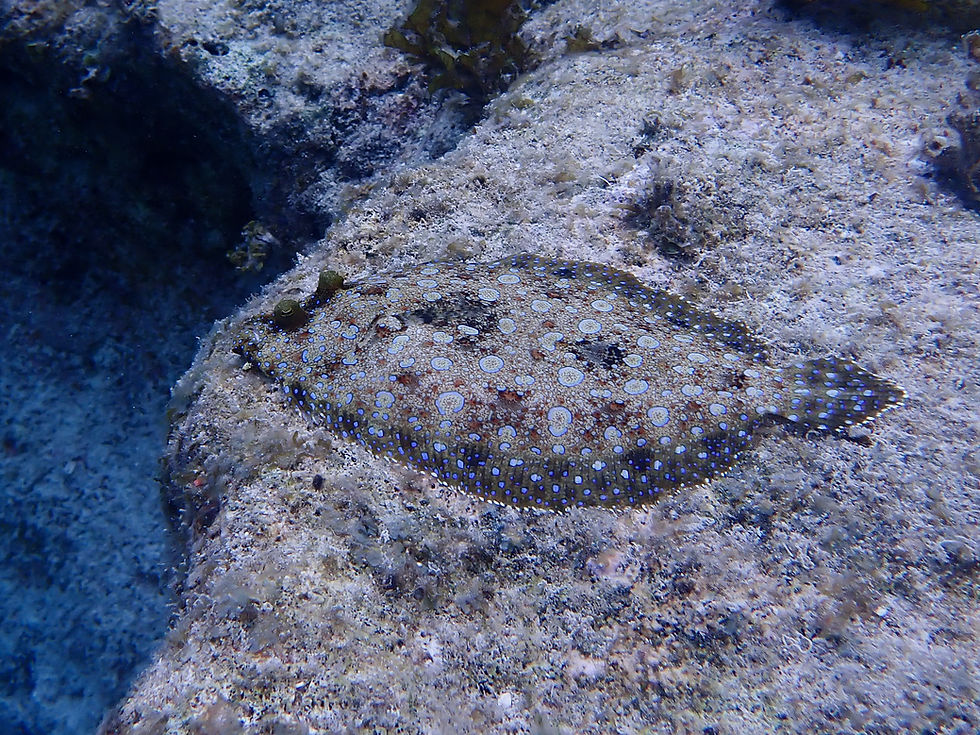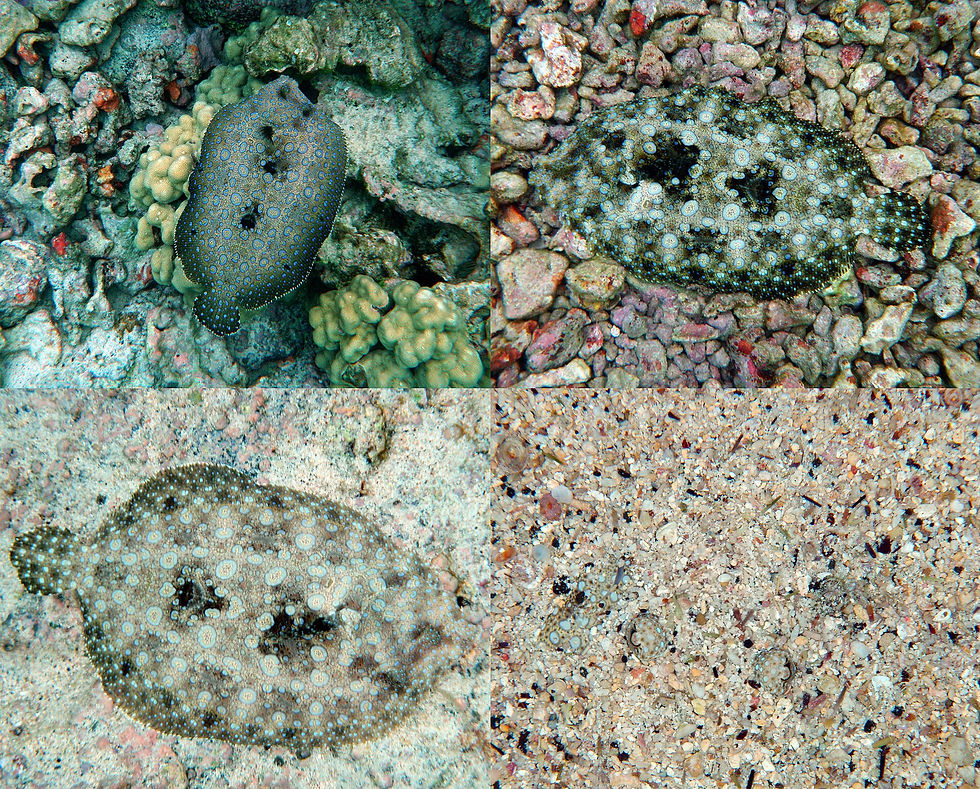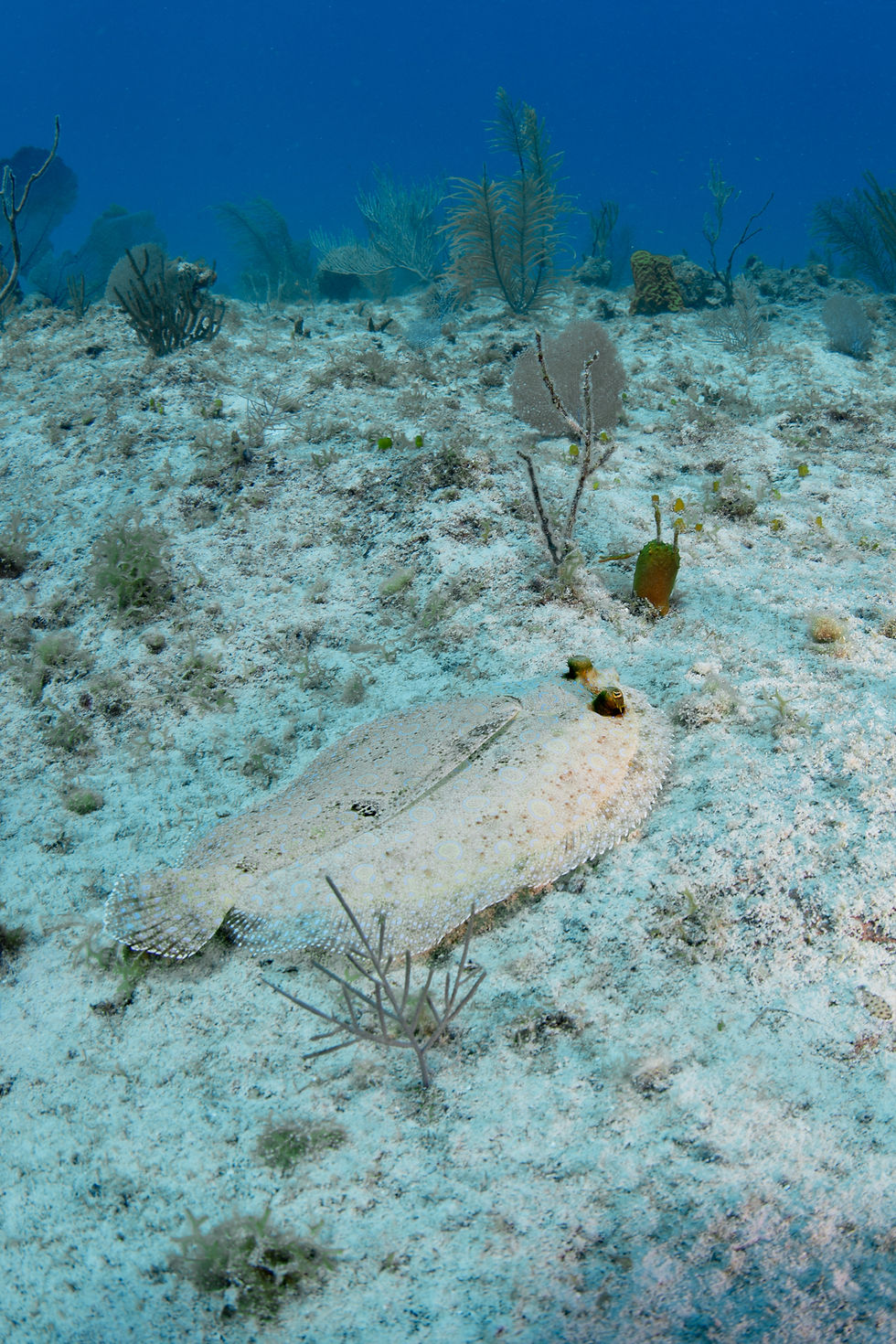Peacock Flounders: Masters of Disguise
- jo44345
- Jun 29, 2025
- 3 min read

Spend enough time diving the reefs and sandy shallows of Grand Cayman, and you’ll quickly learn that the most fascinating marine life doesn’t always flash neon colors or dart dramatically through the water. Sometimes it lies almost invisible on the seafloor, waiting for you to slow down and take notice. The peacock flounder (Bothus mancus) is one of those understated stars, they are masters of camouflage, eccentric in movement, and utterly captivating once you spot them.

Peacock flounders are flat fish with both eyes on the same side of their body, an evolutionary quirk that makes them look like aliens when viewed up close. Did you know they aren’t born this way? Like most fish, flounder larvae start life with one eye on each side of their head. As they grow and settle into a benthic lifestyle, one eye migrates to the other side, allowing them to lie flat on the ocean floor while keeping both eyes facing upward. Alien fish indeed!
Peacock flounders have oval-shaped bodies and typically blend so seamlessly into the sand that divers often swim right over them without a second glance. What makes them especially mesmerizing is their ability to change color and patterns, adjusting to their surroundings in seconds to blend in. One minute they’re a pale, sandy color. The next, they’ve adopted blotches of blue and green that mimic patches of coral or rocks. It’s like watching nature’s own version of a magic trick!

These elusive fish tend to favor shallow sandy flats and gently sloping reef edges. You’ll often find them on the hard pan at shallow sites like Cobalt Coast, Lighthouse Point, or just off the shore at Cemetery Beach. They don’t typically venture too deep (anywhere from 10 to 40 feet is their comfort zone) which makes them accessible even to snorkelers with a good eye and a bit of patience. The best way to find them is to slow down, stay neutrally buoyant, and scan the sand for a pair of raised eyes or a faint outline that looks just a little too symmetrical to be rock.
If you've ever seen a peacock flounder in motion, you know they don’t swim like other more "normal" fish. Instead they glide horizontally with a delicate undulation of their fins, almost as if they’re rippling across the ocean floor. When they move, it’s often sudden and deliberate, using quick bursts to evade predators (or curious divers!). Their hunting strategy is equally fascinating. Flounders are ambush predators, lying still and waiting for the right moment to pounce on unsuspecting crabs, shrimp, or small fish. It’s a blink-and-you’ll-miss-it maneuver, ninja-fish style.
Beyond their aesthetic charm, peacock flounders play an important ecological role. As predators of small ocean-dwelling creatures, they help maintain balance within the reef ecosystem. And like many of Cayman’s lesser-known marine residents, they remind us of the importance of looking beyond the obvious. While it’s tempting to chase after the turtles and rays - and we love those too! - there’s something profoundly rewarding about noticing the hidden life on the reef.
So next time you’re diving with us, take a moment to pause over the sandy patches and look closely. What might first appear to be a ripple in the sand could be a perfectly camouflaged flounder, quietly watching you with their weird upward-facing eyes. With a bit of patience and a touch of luck, you’ll catch a glimpse of one of the reef’s most intriguing fish. And trust us, it’s worth the second look!





Comments